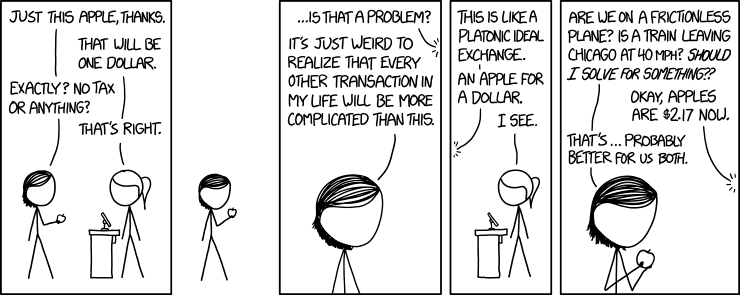A blog about how-to, internet, social-networks, windows, linux, blogging, tips and tricks.
13 July 2018
Apple announces clean energy fund in China
Apple has announced a new investment fund to foster clean energy usage in China. The company isn’t just trying to switch its own offices and facilities. Apple is also working with its suppliers to expand the use of clean energy across the board.
For this fund in particular, Apple and 10 suppliers will invest $300 million over the next four years. Overall, the company expects to finance multiple clean energy projects to produce 1 gigawatt of renewable energy in China.
Apple isn’t going to manage the fund itself. The company is partnering with DWS Group, a division of Deutsche Bank. DWS will also participate in the fund.
The company started working on renewable energy projects a few years ago. Earlier this year, Apple claimed that 100 percent of its offices, retail stores, data centers and Apple-owned facilities are now powered by renewable energy.
Apple is not there yet when it comes to suppliers. The company has launched the Supplier Clean Energy Program back in 2015 with 23 manufacturing partners, and regularly shares updates — Foxconn seems to be missing so far.
By 2020, Apple and its suppliers hope to generate 4 gigawatts of clean energy. And let’s be honest, this is great news for the planet.

Read Full Article
Sales of PCs just grew for the first time in six years
Don’t look now, but the PC might not be dead. According to Gartner, collector of marketshare and industry metrics, worldwide shipments of personal computers just experienced the first year-over-year growth since 2012. Shipments totaled 62.1 million units, which is a 1.4 percent increase from the same time period in 2017. The report states “experienced some growth compared with a year ago” but goes on to caution declaring the PC industry as in recovery just yet.
The top five PC vendors all experienced growth with Lenovo seeing the largest gains of 10.5% — though that could be from Lenovo completing a joint venture with Fujitsu. HP grew 6.1%, Dell 9.5%, Apple 3% and Acer 3.1%. All good signs for an industry long thought stagnate. This report excludes Chromebooks from its data. PC vendors experienced growth without the help of Chromebooks, which are the latest challenger to the notebook computer.
Gartner points to the business market as the source of the increased demand. The consumer market, it states, is still decreasing as consumers increasing use mobile devices. Yet growth in the business sector will not last, it says.
“In the business segment, PC momentum will weaken in two years when the replacement peak for Windows 10 passes.” said Mikako Kitagawa, principal analyst at Gartner said in the report. “PC vendors should look for ways to maintain growth in the business market as the Windows 10 upgrade cycle tails off.”
Consumers will likely continue, for the most part, to keep a computer around but since the web is the new desktop, the upgrade cycle for a causal user will keep getting longer. As long as a home has a computer that can run Chrome, that’s likely good enough for most people.
Read Full Article
Adobe could bring Photoshop to the iPad
Adobe currently has three dozens apps in the App Store. But one app is still missing. According to a report from Bloomberg, the company could be working on a full-fledged version of Photoshop for the iPad. And it makes sense for a ton of reasons.
First, it’s clear that the iPad has become powerful enough to run complicated image editing software. Just two days ago, Serif launched Affinity Designer for the iPad, an Adobe Illustrator competitor. You can also look at benchmarks to find out that the iPad Pro is now more powerful than most mid-range laptops.
Second, now that you can effortlessly sync your files and projects across multiple devices, many people work using multiple devices. It’s been true for many years if you’re just working on a Microsoft Word file on your work computer and your personal laptop for instance. Maybe you use Dropbox or OneDrive to stay on the same page. But it’s also true with huge media libraries now.
A few years ago, people looked at their devices based on contexts. Maybe you had a work laptop, a couch-computing iPad, a big desktop computer for games, etc. But this is a thing of the past now that you can literally work from all your devices.
And when it comes to Photoshop, the Apple Pencil and touch screen makes the iPad a particularly useful device. Maybe you need a big screen to look at a photo, but maybe you want to use the Apple Pencil to interact with the photo.
Bringing Photoshop to the iPad could let you seamlessly work on the same file across multiple devices, switching back and forth between those two devices. Illustrators could really use this kind of flexibility and ditch their Wacom tablet.
You might remember that Apple has put together a Pro Workflow Team for the same reason. You could imagine launching Final Cut Pro X or Logic Pro X on an iMac and on an iPad to interact with a project in different ways. Apple may not be working on Macs with a touchscreen, but it’s clear that there will be ways to interact with a creative project using your finger or the Apple Pencil.
Finally, bringing Photoshop to the iPad makes sense on a business model perspective. Now that Adobe has shifted to a subscription model, the company needs to increase stickiness as much as possible. If you end up spending more time in Adobe apps because your favorite app is on all platforms, you’ll keep paying for Creative Cloud every month.
This project will be an engineering achievement. But this isn’t the first time Adobe is developing a single app for multiple platforms.
TIL the new Lightroom CC is almost entirely built in Lua, running the same codebase on iOS, Mac, Windows & Android using Adobe's new UI system & design language. Seems significant…
— Steve Troughton-Smith (@stroughtonsmith) July 13, 2018
Bloomberg says that we might hear more from Photoshop for iPad at the Adobe Max conference in October. Adobe’s chief product officer of Creative Cloud Scott Belsky confirmed that the company was working on releasing these new versions as quickly as possible.
Read Full Article
7 New Raspbian Features to Start Using on Your Raspberry Pi

Think you know the Raspberry Pi’s default operating system, Raspbian? Think again!
Over the last few releases, a bunch of new features have been added. Here’s what to look out for, why these features are useful, and how you can start making the most of them.
1. Setup Wizard

If you’ve ever installed Raspbian on to your Raspberry Pi’s SD card, you’ll probably know that started can be a bit of a pain. You can use the standard installation, or rely on NOOBS, but neither of these things offers an easy setup. There’s the PiBakery, for configuring your Raspbian installation before the image is written to SD card, but other than that, there’s a bit of tweaking required.
Not anymore.
With the June 2018 release of Raspbian comes the Setup Wizard, which lets you set your country and language, enter a new password, connect to a Wi-Fi network, and check for updates. Not only does this give you the best possible user experience, it also gets you online quickly, and overcomes that famous Raspberry Pi security issue: the pi/raspberry username and password combination that everyone knows.
You won’t need this on an already-setup Raspberry Pi, but if you’re curious, you can install the Setup Wizard to take a look at it:
sudo apt install piwiz
2. Pi Compatibility

You can get hold of several different models of Raspberry Pi, and thanks to the efforts of the Raspbian development team, the operating system runs well on all of them.
Due to hardware differences, however, some applications don’t run on lower-spec models. For instance, the Raspberry Pi Zero and original Raspberry Pi cannot run the Chromium browser (although several alternatives are available).
This means that instructions for performing tasks, building projects, whatever you’re doing, are the same regardless of Pi model.
3. Recommended Software Tool
Long ago, the Raspberry Pi Foundation introduced the Pi Store, a browser-based app store for Raspbian. Within, you could find software suitable for running on the Raspberry Pi, everything from popular third party apps to amateur creations.
For some reason, this was retired, and more and more software was bundled with each Raspbian release.
Until June 1018, however, when Raspbian’s image size was reduced. This was done by cutting the number of apps bundled with the operating system. Via the new Recommended Software tool, however, these apps can be installed if required, as long as your Pi is connected to the internet.
After updating your Raspberry Pi, you can add the Recommended Software tool with
sudo apt install rp-prefapps
You’ll find the new Recommended Software tool in Menu > Preferences.
4. Chromium-Based Help Files

The latest version of Chromium is bundled into new Raspbian builds, and this now includes the arrival of some improved help files.
While older, lower-spec Raspberry Pis cannot run Chromium, the Raspberry Pi 2 and later can. Just make sure you keep the number of open tabs to a minimum! The June 2018 update of Raspbian features Chromium version 65 and some updated links to the Raspberry Pi Foundation’s website.
You’ll also find a new Get Started option in the desktop Help menu, linking to new help pages to help you get your Raspberry Pi up and running. Look out for tips and tricks for using the computer’s key features.
5. PDF Viewer Replaced
For a long time, the Raspberry Pi’s main operating system (many others are available) shipped with a built in PDF viewer, Xpdf. Easy enough to use, Xpdf was first released in 1995 and hasn’t improved considerably since then. It struggles with media-heavy PDFs too. It’s more suited to text-only documents.
The solution for Raspbian users has been to employ a different PDF reader, but in 2018 a new PDF reader has been added to the operating system.
Known as qpdfView, this is a document viewer with a tabbed interface, with search feature, configurable toolbars and keyboard shortcuts, thumbnail panes, multi-page layouts, form support, and compatibility with PostScript and DjVu documents. In short, it’s better than Xpdf.
Add qpdfView (and uninstall Xpdf) to an existing Raspbian installation with:
sudo apt install qpdfview
sudo apt purge xpdf
6. Screen Resolution and Pixel Doubling
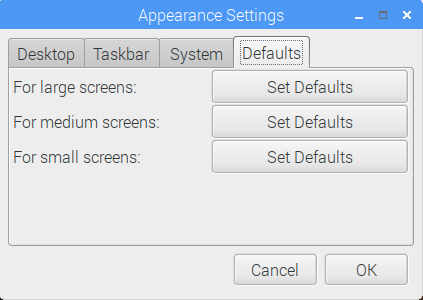
As of March 2018, Raspbian has a new feature that improves support for the vast number of display types. Even standard desktop displays have a number of differences between how they display the output from your computer.
For powerful desktops with a lot of processing power and space, this is probably not a big issue… But it’s a different situation for little Raspberry Pis.
The Appearances Settings box (in Menu > Preferences) has been revised to feature a new Defaults tab. This allows screens in three categories (small, medium, and large) to have default icon size, font size, and other settings applied.
On the matter of display settings, Pixel Doubling has also been added. This is for ultra-high resolution displays, and is aimed more at Raspbian x86 rather than the Raspberry Pi version. Pixels can appear very small with UHD resolution displays, so enabling Pixel Doubling will beef things up a bit, converting every single pixel to a blockier 2×2 pixel.
Find Pixel Doubling in the Raspberry Pi Configuration tool, either on the desktop, or via:
sudo raspi-config
7. Network Booting

Usually, you’ll boot your Raspberry Pi from the SD card. You might even boot from a USB device. But thanks to a new feature, it’s now possible to boot your Raspberry Pi over Ethernet, using a central server.
This utilizes Preboot eXecution Environment (or PXE, pronounced “pixie”), and is widely known as network boot. PXE has been around in desktops and servers for many years, but its addition to Raspbian makes it possible to set up one or more Raspberry Pis as thin clients.
Check our guide for the full steps on booting your Raspberry Pi from the network.
How to Stay Up-to-Date on Raspbian
Don’t have any of these features, or want to ensure your Raspbian OS is always up-to-date?
Well, you could simply start all over again with a fresh install. To do this, simply download a new image from raspberrypi.org/downloads and install the IMG file to your SD card.
If you prefer to upgrade an existing installation, however, simply open the terminal and enter:
sudo apt-get update
sudo apt-get dist-upgrade
Doing this on a weekly or monthly basis will ensure your Raspberry Pi is running the most recent version of the operating system, and all packaged software.
To sum up, Raspbian has had the following features added in 2018:
- Setup wizard
- Backwards compatibility
- Recommended software tool
- New PDF viewer, qpdfView
- Chromium update and web-based help files
- Screen resolution and pixel doubling
- Network booting (PXE)
What’s more, it isn’t only for Raspberry Pi computers. There’s a version of Raspbian for x86 desktop and laptop computers too!
Read the full article: 7 New Raspbian Features to Start Using on Your Raspberry Pi
Read Full Article
Adobe could bring Photoshop to the iPad
Adobe currently has three dozens apps in the App Store. But one app is still missing. According to a report from Bloomberg, the company could be working on a full-fledged version of Photoshop for the iPad. And it makes sense for a ton of reasons.
First, it’s clear that the iPad has become powerful enough to run complicated image editing software. Just two days ago, Serif launched Affinity Designer for the iPad, an Adobe Illustrator competitor. You can also look at benchmarks to find out that the iPad Pro is now more powerful than most mid-range laptops.
Second, now that you can effortlessly sync your files and projects across multiple devices, many people work using multiple devices. It’s been true for many years if you’re just working on a Microsoft Word file on your work computer and your personal laptop for instance. Maybe you use Dropbox or OneDrive to stay on the same page. But it’s also true with huge media libraries now.
A few years ago, people looked at their devices based on contexts. Maybe you had a work laptop, a couch-computing iPad, a big desktop computer for games, etc. But this is a thing of the past now that you can literally work from all your devices.
And when it comes to Photoshop, the Apple Pencil and touch screen makes the iPad a particularly useful device. Maybe you need a big screen to look at a photo, but maybe you want to use the Apple Pencil to interact with the photo.
Bringing Photoshop to the iPad could let you seamlessly work on the same file across multiple devices, switching back and forth between those two devices. Illustrators could really use this kind of flexibility and ditch their Wacom tablet.
You might remember that Apple has put together a Pro Workflow Team for the same reason. You could imagine launching Final Cut Pro X or Logic Pro X on an iMac and on an iPad to interact with a project in different ways. Apple may not be working on Macs with a touchscreen, but it’s clear that there will be ways to interact with a creative project using your finger or the Apple Pencil.
Finally, bringing Photoshop to the iPad makes sense on a business model perspective. Now that Adobe has shifted to a subscription model, the company needs to increase stickiness as much as possible. If you end up spending more time in Adobe apps because your favorite app is on all platforms, you’ll keep paying for Creative Cloud every month.
This project will be an engineering achievement. But this isn’t the first time Adobe is developing a single app for multiple platforms.
TIL the new Lightroom CC is almost entirely built in Lua, running the same codebase on iOS, Mac, Windows & Android using Adobe's new UI system & design language. Seems significant…
— Steve Troughton-Smith (@stroughtonsmith) July 13, 2018
Bloomberg says that we might hear more from Photoshop for iPad at the Adobe Max conference in October. Adobe’s chief product officer of Creative Cloud Scott Belsky confirmed that the company was working on releasing these new versions as quickly as possible.
Read Full Article
Blue Origin could charge $200k-$300k for a trip to space
How much would you pay to leave our dumpster fire of a world for just a few minutes? Blue Origin is considering charging $200,000 to $300,000 according to a Reuters report. For that price, passengers would get a seat on Blue Origin’s New Shepard, the commercial space vehicle from Jeff Bezos’ rocket company.
The rocket would take passengers to suborbital space to experience weightlessness and see the curvature of the Earth. This is done autonomously and can hold six passengers. Parachutes will return the capsule back to solid ground.
This claim comes from two people with knowledge of the space program’s pricing, Reuters says.
Passengers have time to start saving. Ferrying passengers to space is still a ways off for Blue Origin. The company has completed eight test flights including landing the rocket vertically, but has yet to strap a human into one of the seats. That’s apparently coming within weeks, one employee is quoted on saying in the Reuters’ report.
Blue Origin isn’t the only one selling tickets to space. Richard Branson’s Virgin Galactic says it has sold about 650 $250,000 tickets to space aboard its craft; launch dates have yet to be announced for that trip too.
Bezos has larger ambitions than just being an amusement ride. In May, speaking at the Space Development Conference in Los Angeles with the inimitable Alan Boyle, Bezos chatted about the idea of making the moon a center for heavy industry, which he thinks will help conserve resources here on Earth. When the time comes, he hopes that lunar residence and industry will be a shared privilege, with countries working together in a “lunar village” and combining their strengths rather than testing them against one another.
Read Full Article
The Rising STAR robot can run, flip, and crawl
A clever little robot made by researchers at Ben-Gurion University of the Negev can roll around, flip itself over, and even crawl like a turtle through rough terrain. The robot uses wheels, a set of star-shaped rollers, and cleverly-articulated arms to ride along at various speeds.
The robot, called Rising STAR, uses wheels and spoked “whegs” to roll around at about one meter per second and it can fold itself flat and pull itself forward when it finds mud or sand. It can also make itself very skinny to ride through tight spots and can even flip itself over if it falls.
A weighted “head” can keep the robot balanced as it tools along, allowing it to climb up and over steep surfaces and, the researchers say, even sneak through pipes or between tight walls.
Rising STAR is an updated version of the university’s Sprawl-Tuned Autonomous Robot that it displayed in 2013. This new version is far more capable and, thanks to its “whegs” and turtle-gait, far cooler.
Read Full Article
The 8 Best Video Game Documentaries and Where to Stream Them

The most logical way to indulge your insatiable appetite for playing video games is to, well, play some video games. However, there are other ways to feed your need for video games!
One of the more enlightening ways to scratch the itch is watching video game documentaries. A good video game documentary not only provides you with a solid hour or two of entertainment, but also teaches you something you didn’t previously know.
And there are lots of quality video game documentaries out there, with most of them available to stream online or through a movie rental service. In this article, we’ve compiled a list of the best video game documentaries and where you can stream them!
1. King of Kong
King of Kong: A Fist Full of Quarters is probably the most famous video game documentary of them all. The film, which was directed by Seth Gordon, covers the story of Steve Wiebe as he tries to wrest the Donkey Kong high score from the previous record-holder Billy Mitchell.
The story was incredibly interesting when the film was made in 2007, but it’s even more enticing now with Billy Mitchell having all of his records stripped from him.
Where to Stream It: Google Play, iTunes, Microsoft Store
2. Double Fine Adventure
This is one of the most enthralling looks at what it takes to make a video game. The documentary came to be as part of Double Fine’s Kickstarter campaign for a new game. The game, which eventually became Broken Age, is a point-and-click adventure. And whether you like the genre or not this documentary is fascinating!
Double Fine Adventure is split up into 20 episodes. You can jump in and out without the same level of a commitment that a movie typically requires. However, your overall time commitment is going to be much longer, because each episode is between 30 and 40 minutes long.
So, kick back, relax, and get ready to watch the struggle of taking a video game from idea to reality while a dedicated community grows more and more impatient.
Where to Stream It: Direct, Steam
3. Free to Play: The Movie
This is my favorite documentary listed here, but as a dedicated player of Dota 2 I may be a little biased.
However, even if you’re not a Dota player, this documentary is still an entertaining look at what players at the highest levels go through to prepare for the most lucrative tournament in video games. It’s one of those documentaries where the subject matter isn’t that important—it’s a story about people.
Free to Play: The Movie follows the stories of three pro Dota 2 players as they get ready to compete for a $1 million prize pool (The international prize pools have grown substantially since then). If you’re curious to see behind the scenes of a major eSports event, this is definitely the documentary for you.
Where to Stream It: YouTube, Steam
4. Indie Game: The Movie
This movie gives us an incredible sneak peak into the world of independent game development. It follows the creation of Super Meat Boy, FEZ, and Braid, all of which went on to be incredibly successful titles. Of course, that success didn’t come easily, and Indie Game: The Movie documents that struggle.
Indie Game: The Movie has won its fair share of awards and received praise from both video game journalists and other developers for the very real way in which it shows the struggle of creating video games. Even though it was released in 2012, it’s still highly watchable.
Where to Stream It: Direct, Google Play, iTunes, YouTube, Microsoft Store
5. Naughty Dog 30th Anniversary Documentary
Naughty Dog is responsible for some of the most beloved video game franchises of all time, including The Last of Us, Uncharted, and Crash Bandicoot. The company was making games for the Apple II, and the legacy runs deep.
So when you get the chance to go behind the curtain and see how things are done at such a prolific and beloved developer, you should take the opportunity.
The documentary plays like a trip down memory lane, celebrating some of the accomplishments of the beloved studio. Any hardcore gaming fan will love all the interviews and information in this film.
Most importantly, Naughty Dog 30th Anniversary Documentary is entertaining while being informative, which is what truly separates a good documentary from a bad one.
Where to Stream It: YouTube
6. Minecraft: The Story of Mojang
Before Fortnite completely took over the world of video games, Minecraft captured the imagination of players of all ages. This interesting documentary covers the story of Mojang, the team behind Minecraft.
As you might expect, Markus “Notch” Persson, the well-known face of the company, is heavily featured in the film, and he’s quite the character.
The film starts just after Minecraft exploded onto the scene. You get the see the excitement of a developer realizing their creation is actually taking off in a big way. Not only does the documentary feature the creators of the game, but it actually shows the players too.
Plenty of popular Minecraft YouTubers are in the movie, so it hits on a rather diverse section of people.
Where to Stream It: Direct, iTunes
7. Atari: Game Over
Is there a name more important to the rise (and fall and rise again) of video games than Atari? The Atari 2600 console truly put home gaming on the map, but that success didn’t come without some pretty serious issues.
Atari: Game Over recounts the rise and fall of one of the household names of video games, and it’s quite tragic. The fact that one company could achieve such success and then almost completely kill games is quite shocking.
The lens through which the story is told makes this movie stand out. The tale of Atari is interwoven with the tale of a crew attempting to dig up the site where Atari is thought to have thrown out numerous copies of E.T. the Extra-Terrestrial.
Production values on this documentary are top notch, as it started out as an Xbox Originals film and moved onto other platforms later. Atari: Game Over is worth watching even if you know the end result, as the history lesson is fascinating.
Where to Stream It: iTunes, Google Play, Microsoft Store
8. Video Games: The Movie
Rounding out this list is a very broad movie. Instead of focusing in on one specific company or story, this documentary attempts to tell the overarching story of video games and how they got to this point.
The film tells the story of gaming rising from a niche hobby to a gigantic business that is one of the most beloved forms of entertainment.
Video Games the Movie comes from the the minds of executive producer Zach Braff and CliffyB (aka Cliff Bleszinski, the name behind Unreal and Gears of War) and they really do a great job with the wide-reaching subject matter.
If you have a family who just doesn’t seem to “get” your gaming hobby, sit down and watch this with them and see if it helps them understand why games are a big deal.
Where to Stream It: Amazon Prime Video, iTunes, Microsoft Store
You Are Now a Video Game Expert
If you take the time to kick back, relax, and watch all of these documentaries, you’ll know more about video games than most people. Even the so-called experts.
You’ll learn about esports, retro games, indie games, AAA development, and just about every other aspect of gaming. However, be aware that video games are addicting and you should leave your house occasionally.
Read the full article: The 8 Best Video Game Documentaries and Where to Stream Them
Read Full Article
Facebook would make a martyr by banning Infowars
Alex Jones’ Infowars is a fake news-peddler. But Facebook deleting its Page could ignite a fire that consumes the network. Still, some critics are asking why it hasn’t done so already.
This week Facebook held an event with journalists to discuss how it combats fake news. The company’s recently appointed head of News Feed John Hegeman explained that, “I guess just for being false, that doesn’t violate the community standards. I think part of the fundamental thing here is that we created Facebook to be a place where different people can have a voice.”
In response, CNN’s Oliver Darcy tweeted: “I asked them why InfoWars is still allowed on the platform. I didn’t get a good answer.” BuzzFeed’s Charlie Warzel meanwhile wrote that allowing the Infowars Page to exist shows that “Facebook simply isn’t willing to make the hard choices necessary to tackle fake news.”
Facebook’s own Twitter account tried to rebuke Darcy by tweeting, “We see Pages on both the left and the right pumping out what they consider opinion or analysis – but others call fake news. We believe banning these Pages would be contrary to the basic principles of free speech.” But harm can be minimized without full-on censorship.

There is no doubt that Facebook hides behind political neutrality. It fears driving away conservative users for both business and stated mission reasons. That strategy is exploited by those like Jones who know that no matter how extreme and damaging their actions, they’ll benefit from equivocation that implies ‘both sides are guilty,’ with no regard for degree.
Instead of being banned from Facebook, Infowars and sites like it that constantly and purposely share dangerous hoaxes and conspiracy theories should be heavily down-ranked in the News Feed.
Effectively, they should be quarantined, so that when they or their followers share their links, no one else sees them.
“We don’t have a policy that stipulates that everything posted on Facebook must be true — you can imagine how hard that would be to enforce,” a Facebook spokesperson told TechCrunch. “But there’s a very real tension here. We work hard to find the right balance between encouraging free expression and promoting a safe and authentic community, and we believe that down-ranking inauthentic content strikes that balance. In other words, we allow people to post it as a form of expression, but we’re not going to show it at the top of News Feed.”
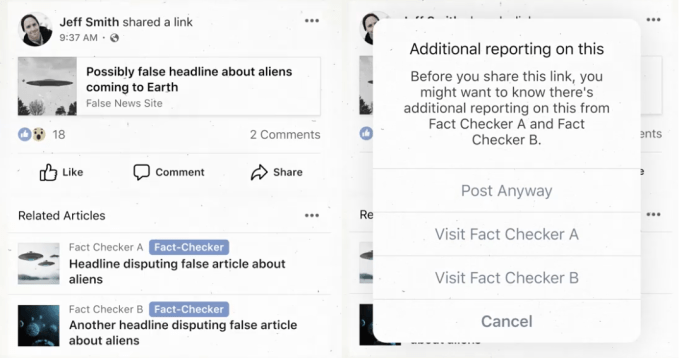
Facebook already reduces the future views of posts by roughly 80 percent when they’re established as false by its third-party fact checkers like Politifact and the Associated Press. For repeat offenders, I think that reduction in visibility should be closer to 100 percent of News Feed views. What Facebook does do to those whose posts are frequently labeled as false by its checkers is “remove their monetization and advertising privileges to cut off financial incentives, and dramatically reduce the distribution of all of their Page-level or domain-level content on Facebook.”
The company wouldn’t comment directly about whether Infowars has already been hit with that penalty, noting “We can’t disclose whether specific Pages or domains are receiving such a demotion (it becomes a privacy issue).” For any story fact checked as false, it shows related articles from legitimate publications to provide other perspectives on the topic, and notifies people who have shared it or are about to.
 But that doesn’t solve for the initial surge of traffic. Unfortunately, Facebook’s limited array of fact checking partners are strapped with so much work, they can only get to so many BS stories quickly. That’s a strong endorsement for more funding to be dedicated to these organizations like Snopes, preferably by even keeled non-profits, though the risks of governments or Facebook chipping in might be worth it.
But that doesn’t solve for the initial surge of traffic. Unfortunately, Facebook’s limited array of fact checking partners are strapped with so much work, they can only get to so many BS stories quickly. That’s a strong endorsement for more funding to be dedicated to these organizations like Snopes, preferably by even keeled non-profits, though the risks of governments or Facebook chipping in might be worth it.
Given that fact-checking will likely never scale to be instantly responsive to all fake news in all languages, Facebook needs a more drastic option to curtail the spread of this democracy-harming content on its platform. That might mean a full loss of News Feed posting privileges for a certain period of time. That might mean that links re-shared by the supporters or agents of these pages get zero distribution in the feed.
But it shouldn’t mean their posts or Pages are deleted, or that their links can’t be opened unless they clearly violate Facebook’s core content policies.
Why downranking and quarantine? Because banning would only stoke conspiratorial curiosity about these inaccurate outlets. Trolls will use the bans as a badge of honor, saying, “Facebook deleted us because it knows what we say is true.”
They’ll claim they’ve been unfairly removed from the proxy for public discourse that exists because of the size of Facebook’s private platform.
What we’ll have on our hands is “but her emails!” 2.0
People who swallowed the propaganda of “her emails”, much of which was pushed by Alex Jones himself, assumed that Hillary Clinton’s deleted emails must have contained evidence of some unspeakable wrongdoing — something so bad it outweighed anything done by her opponent, even when the accusations against him had evidence and witnesses aplenty.
If Facebook deleted the Pages of Infowars and their ilk, it would be used as a rallying cry that Jones’ claims were actually clairvoyance. That he must have had even worse truths to tell about his enemies and so he had to be cut down. It would turn him into a martyr.
Those who benefit from Infowars’ bluster would use Facebook’s removal of its Page as evidence that it’s massively biased against conservatives. They’d push their political allies to vindictively regulate Facebook beyond what’s actually necessary. They’d call for people to delete their Facebook accounts and decamp to some other network that’s much more of a filter bubble than what some consider Facebook to already be. That would further divide the country and the world.
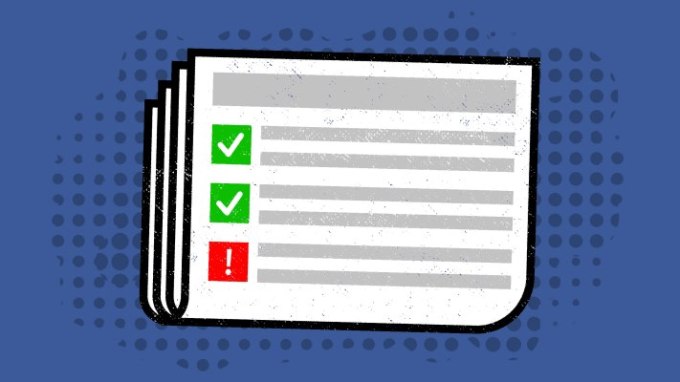
When someone has a terrible, contagious disease, we don’t execute them. We quarantine them. That’s what should happen here. The exception should be for posts that cause physical harm offline. That will require tough judgement calls, but knowing inciting mob violence for example should not be tolerated. Some of Infowars posts, such as those about Pizzagate that led to a shooting, might qualify for deletion by that standard.
Facebook is already trying to grapple with this after rumors and fake news spread through forwarded WhatsApp messages have led to crowds lynching people in India and attacks in Myanmar. Peer-to-peer chat lacks the same centralized actors to ban, though WhatsApp is now at least marking messages as forwarded, and it will need to do more. But for less threatening yet still blatantly false news, quarantining may be sufficient. This also leaves room for counterspeech, where disagreeing commenters can refute posts or share their own rebuttals.
Few people regularly visit the Facebook Pages they follow. They wait for the content to come to them through the News Feed posts of the Page, and their friends. Eliminating that virality vector would severely limit this fake news’ ability to spread without requiring the posts or Pages to be deleted, or the links to be rendered unopenable.
If Facebook wants to uphold a base level of free speech, it may be prudent to let the liars have their voice. However, Facebook is under no obligation to amplify that speech, and the fakers have no entitlement for their speech to be amplified.
Image Credit: Getty – Tom Williams/CQ Roll Call, Flickr Sean P. Anderson CC
Read Full Article
Researchers find that filters don’t prevent porn
In a paper entitled Internet Filtering and Adolescent Exposure to Online Sexual Material, Oxford Internet Institute researchers Victoria Nash and Andrew Przybylski found that Internet filters rarely work to keep adolescents away from online porn.
“It’s important to consider the efficacy of Internet filtering,” said Dr, Nash. “Internet filtering tools are expensive to develop and maintain, and can easily ‘underblock’ due to the constant development of new ways of sharing content. Additionally, there are concerns about human rights violations – filtering can lead to ‘overblocking’, where young people are not able to access legitimate health and relationship information.”
This research follows the controversial news that the UK government was exploring a country-wide porn filter, a product that will most likely fail. The UK would join countries around the world who filter the public Internet for religious or political reasons.
The bottom line? Filters are expensive and they don’t work.
Given these substantial costs and limitations, it is noteworthy that there is little consistent evidence that filtering is effective at shielding young people from online sexual material. A pair of studies reporting on data collected in 2005, before the rise of smartphones and tablets, provides tentative evidence that Internet filtering might reduce the relative risk of young people countering sexual material. A more recent study, analyzing data collected a decade after these papers, provided strong evidence that caregivers’ use of Internet filtering technologies did not reduce children’s exposure to a range of aversive online experiences including, but not limited to, encountering sexual content that made them feel uncomfortable.21 Given studies on this topic are few in number and the findings are decidedly mixed, the evidence base supporting the widespread use of Internet filtering is currently weak.
The researchers “found that Internet filtering tools are ineffective and in most cases [and] were an insignificant factor in whether young people had seen explicit sexual content.”
The study’s most interesting finding was that between 17 and 77 households “would need to use Internet filtering tools in order to prevent a single young person from accessing sexual content” and even then a filter “showed no statistically or practically significant protective effects.”
The study looked at 9,352 male and 9,357 female subjects from the EU and the UK and found that almost 50 percent of the subjects had some sort of Internet filter at home. Regardless of the filters installed subjects still saw approximately the same amount of porn.
“Many caregivers and policy makers consider Internet filters a useful technology for keeping young people safe online. Although this position might make intuitive sense, there is little empirical evidence that Internet filters provide an effective means to limit children’s and adolescents’ exposure to online sexual material. There are nontrivial economic, informational, and human rights costs associated with filtering that need to be balanced against any observed benefits,” wrote the researchers. “Given this, it is critical to know possible benefits can be balanced against their costs. Our studies were conducted to test this proposition, and our findings indicated that filtering does not play a practically significant protective role.”
Given the popularity – and lucrative nature – of filtering software this news should encourage parents and caregivers to look more closely and how and why they are filtering their home Internet. Ultimately, they might find, supervision is more important than software.
Read Full Article
Why You’re Losing Twitter Followers

Twitter is having a bit of a spring clean, and purging millions of accounts. The good news is this will clear out some of the deadwood from Twitter. The bad news is this could have a significant impact on your follower count, especially if you’re popular.
Twitter Has a Spring Clean
Twitter currently has around 330 million active users. This is a solid number, but it pales in comparison to Facebook’s billions of users. And beyond the active users there are millions of inactive users who gave up on Twitter a long time ago.
In an effort to clean house, Twitter is currently purging millions of accounts. It recently suspended a reported 70 million accounts it believed to be bots or spammers. And now Twitter is removing locked accounts from follower counts.
Wave Goodbye to Locked Accounts
Locked accounts are those Twitter has previously locked for various reasons. They probably belong to actual people (rather than bots), but because of suspicious behavior were locked until Twitter could ensure there was no foul play (from hackers and the like).
In a blog post, Twitter explains that the reasons for locking an account include “tweeting a large volume of unsolicited replies or mentions, tweeting misleading links, or if a large number of accounts block the account after mentioning them.”
We are committed to building trust and encouraging healthy conversation on Twitter.
Follower counts should be meaningful and accurate. We are removing locked accounts from follower counts.
— Twitter (@Twitter) July 11, 2018
When it locks an account, Twitter contacts the owner and asks them to reset their password in order to regain access. Unfortunately, this often doesn’t happen, so these locked accounts remain inactive. Hence Twitter’s desire to remove them.
Twitter claims that most people will lose an average of four followers. However, the higher the follower count, the higher the number lost. Which means celebrities and politicians are likely to have thousands of followers wiped off their totals in an instant.
How to Up Your Twitter Game
The key thing to remember here is that these accounts weren’t doing anything anyway, so Twitter may as well purge them. Still, this is as good a time as any to share our tips on how to not be boring on Twitter. Which may earn you some new followers.
Image Credit: Andreas Eldh/Flickr
Read the full article: Why You’re Losing Twitter Followers
Read Full Article
The 10 Most Affordable Sites for Printing Digital Photos Online

Nobody seems to print photos anymore. Instead, we throw them up on social media and call it a day. Who needs printed photos taking up drawer space when you have unlimited online photo storage? Plus, online photo galleries are simply more convenient.
But some pictures are so beautiful or valuable that printing makes sense. Perhaps you want to carry them around in your wallet, or you want to print that perfect landscape shot you took so you can hang it over the mantel.
Where can you get such prints? These days, you can just hop online and use one of the many affordable photo printing services that’ll print and ship your photos straight to you. Here are some of the best online photo printing services available.
1. Shutterfly

Shutterfly can turn your digital photos into photo books, cards, stationery, poster prints, mugs, puzzles, mouse pads, pillows, and so much more. Seriously, the selection here is insane. Whatever the occasion, you’ll find something that fits.
In terms of price, it’s pretty good. “Thank You” cards start at $1.39, photo books start at $12.99, and canvas prints start at $69.99. For what you’re getting, these costs are quite affordable—especially when you consider how customized and personal they’ll be. Shutterfly delivers internationally to over 100 countries.
As of this writing, Shutterfly is offering 50 free prints and unlimited photo storage to new customers who sign up. On top of that, they run occasional campaigns that can save you up to 50 percent off your order. Keep an eye out for those deals and you’ll walk away a winner.
2. FreePrints

FreePrints is unique compared to the other services on this list. This one interfaces directly with the photos on your mobile device(s) by means of an app. It’s available for both Android and iOS. Extremely convenient and worth checking out.
How does it work? Whenever you take a photo, you can order free 4×6 prints of it through FreePrints. Not only that, the app can also order free prints of photos on your Facebook, Instagram, Flickr, or Picasa accounts. There are no subscription fees, but you do pay for shipping, which starts at $1.99 but never exceeds $9.99.
Each photo is limited to one free print. Also, you can only order free prints up to 85 photos per month and 1,000 photos per year. If you want prints in a size other than 4×6, those you will need to purchase them.
3. York Photo

York Photo offers photo books, calendars, cards, stationery, posters and panels, and a whole host of gift ideas to print your photos on: apparel, mugs, bags, pillows, home decor, etc.
A single 4×6 print starts at $0.09, posters start at $7.99, photo cards start at $14.99 for a pack of 20, photo books start at $9.99 for 4×6 prints, and everything else is reasonably priced. York Photo has some of the best printing quality of any online service.
All orders over $20 get free shipping, which is nice because the shipping fees aren’t cheap and can jack up the price of an order otherwise.
4. Walgreens Photo

Not just good for pharmacy and convenience items, the photo printing services at most Walgreens are noteworthy. In addition to photo prints, you can order photo books, premium cards, calendars, posters, canvas prints, decor, and more.
Pricing is reasonable but not the cheapest. While photo books start at $24.99 and “Thank You” cards start at $1.99, a small canvas print can be had for as little as $29.99. And the best part? Most prints are eligible for Same Day Pickup, which is fantastic if you have a Walgreens nearby.
5. Snapfish

Snapfish, which is a division of HP (Hewlett-Packard), is a highly affordable online printing service that’s enjoyed by over 90 million members. Not only does it offer digital printing, it’s a community where users can host and share their photos. It even has an online photo editing tool.
Photo books start at $11.99, regular cards start at $0.58, premium cards at $0.99, and canvas prints at $32.99. In addition, they offer “photo gifts” like blankets, pillows, stationery, posters, and more.
What’s cool about Snapfish is that it also specializes in Print-at-Home products. You can download these cards, calendars, etc. and print them yourself if you want. It’s pretty much the exact opposite of an online printing service, but I’ve included mention in case it appeals to you.
6. CVS Photo

Like Walgreens, you can walk into almost any brick-and-mortar CVS and find a photo printing station within. Also like Walgreens, unless you live way out in the middle of nowhere, there’s a good chance you have a CVS nearby.
That makes CVS a great choice for printing photos, because you can order for Same Day Pickup: print online, walk in, retrieve. Or have it delivered to your doorstep if you prefer.
Regular photo prints start as low as $0.33 each, “Thank You” cards can be had for as little as $0.75 each, and canvas prints start at $29.99. The quality of CVS’s photo printing isn’t bad either, so it’s a good balance between quality and price.
7. Walmart Photo

It should come as no surprise that Walmart’s photo printing service is easily the most affordable of them all. With regular photo prints starting at $0.09, “Thank You” cards starting at $0.28, and canvas prints starting at $19.96, Walmart blows its competition out of the water.
And while that undercutting in price does come with a small drop in overall printing quality, it’s still good enough for most uses. You’ll only notice the quality difference if you have an eye trained for photography, or if you’re printing something massive like a poster.
8. AdoramaPix

AdoramaPix is an affiliate of Adorama, the renowned company that acts as both a store for camera gear and an educational resource for learning photography. AdoramaPix is a complementary service for high-quality prints of digital photos.
They use top-of-the-line printers and state-of-the-art software to maximize printing quality all while keeping their prices competitive. For example, photo cards start at $2.95 for a single but can be made cheaper by buying in bulk, going as low as $0.99 each for a pack of 100.
The downside of this is that AdoramaPix doesn’t have a great selection of available products. Other than photo books, calendars, cards, and various kinds of prints, there isn’t much else—but if that’s all you need, AdoramaPix is a great service.
9. Fedex

You probably know Fedex as nothing more than a shipping company for packages and things you buy online, but what you probably didn’t know is that Fedex operates a few other services under its name, including a digital Print & Ship service that you can use online.
Simple posters start at $7.25, photo posters start at $27.99, and canvas prints start at $79.99. Fedex also offers cards, calendars, and even passport photos. Though slightly more expensive than its competitors, we’re not talking by much. Also, you’ll need to pay shipping on these unless your order exceeds $100.
10. Winkflash

If you can catch one of Winkflash’s regular deals, you might be able to grab prints at a price even lower than what’s offered by Walmart. We’ve seen photo prints as low as $0.08, “Thank You” cards as low as $0.36, and canvas prints as low as $9.
Note that the quality drop compared to better online photo printing services is noticeably worse for Winkflash than Walmart. So bad that you should avoid using the service? Not really. But definitely reserve using Winkflash for casual, personal prints and not for gifts or semi-professional work.
Get Your Photos Printed Online and Delivered
I’m a huge fan of digital photography, but I can’t deny that physical photos held in the hands do feel more personal. Want a photo to stand out? To really be set aside as special? Have it printed! You won’t regret it.
Image Credits: maigi/Shutterstock
Read the full article: The 10 Most Affordable Sites for Printing Digital Photos Online
Read Full Article
Google’s Apigee teams up with Informatica to extend its API ecosystem
Google acquired API management service Apigee back in 2016 but it’s been pretty quiet around the service in recent years. Today, however, Apigee announced a number of smaller updates that introduce a few new integrations with the Google Cloud platform, as well as a major new partnership with cloud data management and integration firm Informatica that essentially makes Informatica the preferred integration partner for Google Cloud.
Like most partnerships in this space, the deal with Informatica involves some co-selling and marketing agreements, but that really wouldn’t be all that interesting. What makes this deal stand out is that Google is actually baking some of Informatica’s tools right into the Google Cloud dashboard. This will allow Apigee users to use Informatica’s wide range of integrations with third-party enterprise applications while Informatica users will be able to publish their APIs through Apigee and have that service manage them for them.
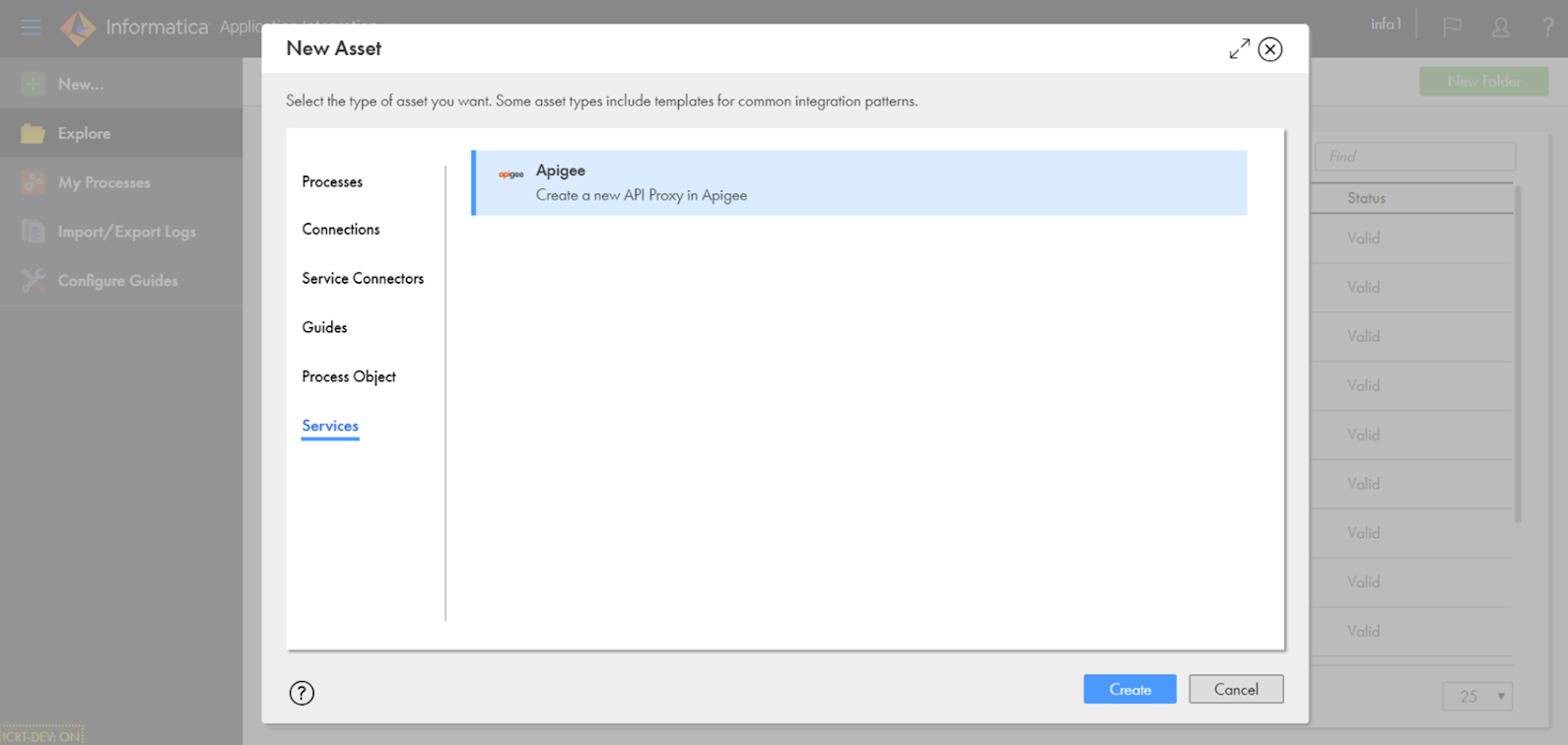
Some of Google’s competitors, including Microsoft, have built their own integration services. As Google Cloud director of product management Ed Anuff told me, that wasn’t really on Google’s roadmap. “It takes a lot of know-how to build a rich catalog of connectors,” he said. “You could go and build an integration platform but if you don’t have that, you can’t address your customers needs.” Instead, Google went to look for a partner who already has this large catalog and plenty of credibility in the enterprise space.
Similarly, Informatica’s senior VP and GM for big data, cloud and data integration Ronen Schwartz noted that many of his company’s customers are now looking to move into the cloud and this move will make it easier for Informatica’s customers to bring their services into Apigee and open them up for external applications. “With this partnership, we are bringing the best of breed of both worlds to our customers,” he said. “And we are doing it now and we are making it available in an integrated, optimized way.”
Read Full Article
Ransomware technique uses your real passwords to trick you
A few folks have reported a new ransomware technique that preys upon corporate inability to keep passwords safe. The notes – which are usually aimed at instilling fear – are simple: the hacker says “I know that your password is X. Give me a bitcoin and I won’t blackmail you.”
Programmer Can Duruk reported getting the email today.
Woah. This is cool. A Bitcoin ransom with using what I think is passwords from a big leak. Pretty neat since people would be legit scared when they see their password. The concealed part is actually an old password I used to use. pic.twitter.com/clEYiFqvHY
— can (@can) July 11, 2018
The email reads:
I’m aware that X is your password.
You don’t know me and you’re thinking why you received this e mail, right?
Well, I actually placed a malware on the porn website and guess what, you visited this web site to have fun (you know what I mean). While you were watching the video, your web browser acted as a RDP (Remote Desktop) and a keylogger which provided me access to your display screen and webcam. Right after that, my software gathered all your contacts from your Messenger, Facebook account, and email account.
What exactly did I do?
I made a split-screen video. First part recorded the video you were viewing (you’ve got a fine taste haha), and next part recorded your webcam (Yep! It’s you doing nasty things!).
What should you do?
Well, I believe, $1400 is a fair price for our little secret. You’ll make the payment via Bitcoin to the below address (if you don’t know this, search “how to buy bitcoin” in Google).
BTC Address: 1Dvd7Wb72JBTbAcfTrxSJCZZuf4tsT8V72
(It is cAsE sensitive, so copy and paste it)Important:
You have 24 hours in order to make the payment. (I have an unique pixel within this email message, and right now I know that you have read this email). If I don’t get the payment, I will send your video to all of your contacts including relatives, coworkers, and so forth. Nonetheless, if I do get paid, I will erase the video immidiately. If you want evidence, reply with “Yes!” and I will send your video recording to your 5 friends. This is a non-negotiable offer, so don’t waste my time and yours by replying to this email.
To be clear there is very little possibility that anyone has video of you cranking it unless, of course, you video yourself cranking it. Further, this is almost always a scam. That said, the fact that the hackers are able to supply your real passwords – most probably gleaned from the multiple corporate break-ins that have happened over the past few years – is a clever change to the traditional cyber-blackmail methodology.
Luckily, the hackers don’t have current passwords.
“However, all three recipients said the password was close to ten years old, and that none of the passwords cited in the sextortion email they received had been used anytime on their current computers,” wrote researcher Brian Krebs. In short, the password files the hackers have are very old and outdated.
To keep yourself safe, however, cover your webcam when not in use and change your passwords regularly. While difficult, there is nothing else that can keep you safer than you already are if you use two-factor authentication and secure logins.
Read Full Article
